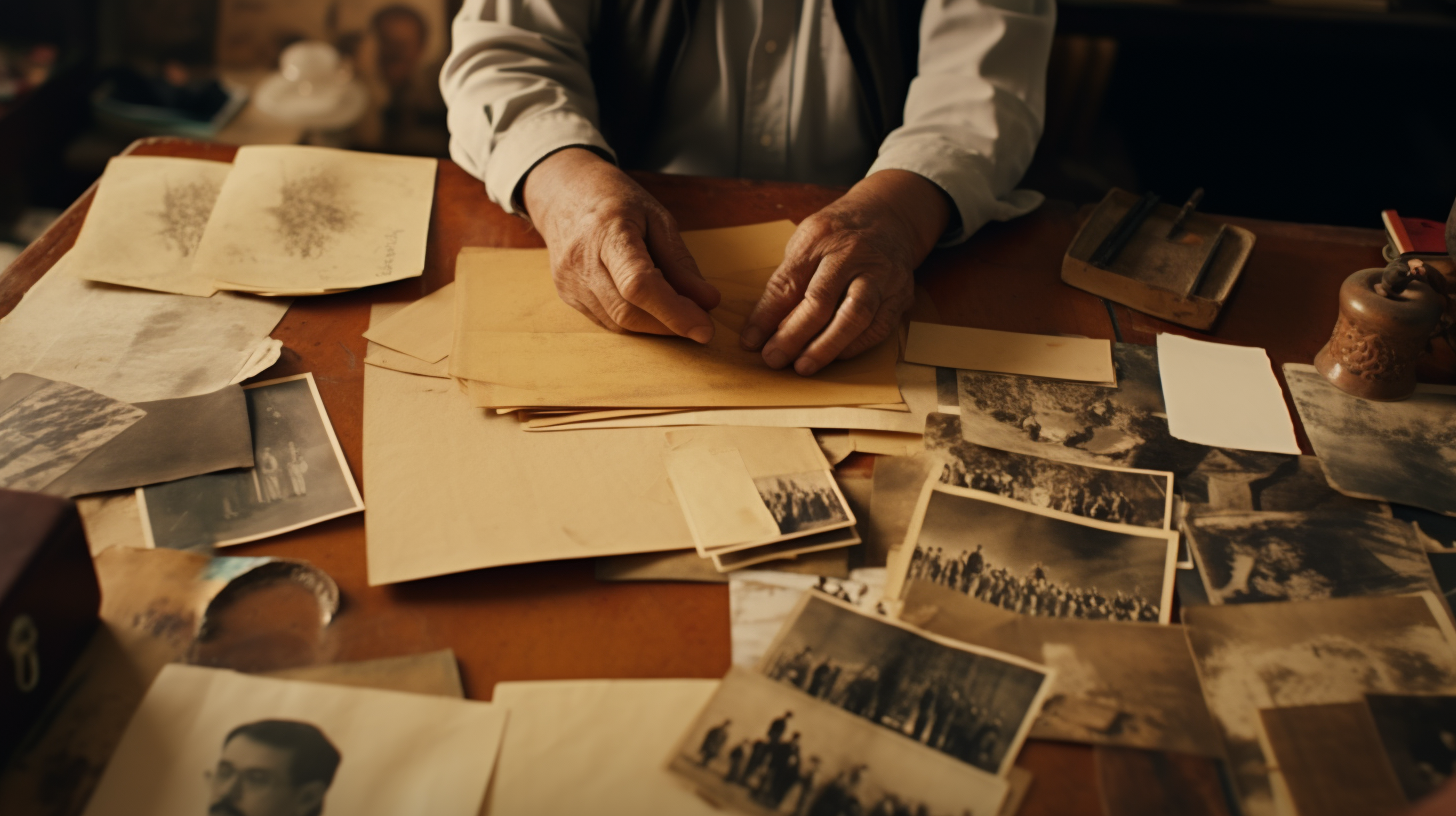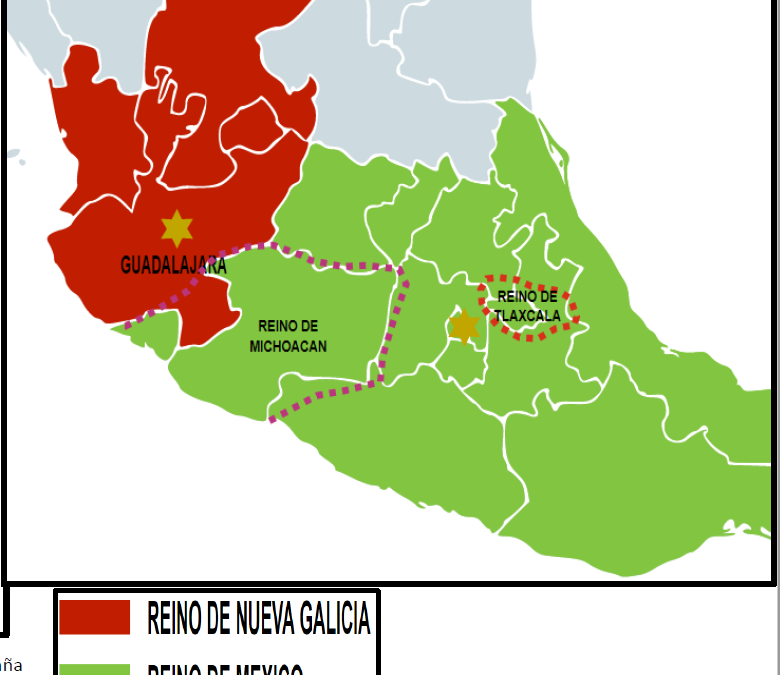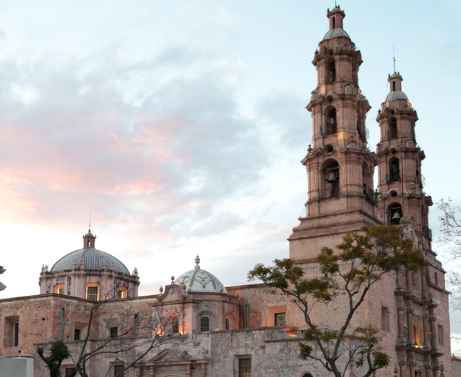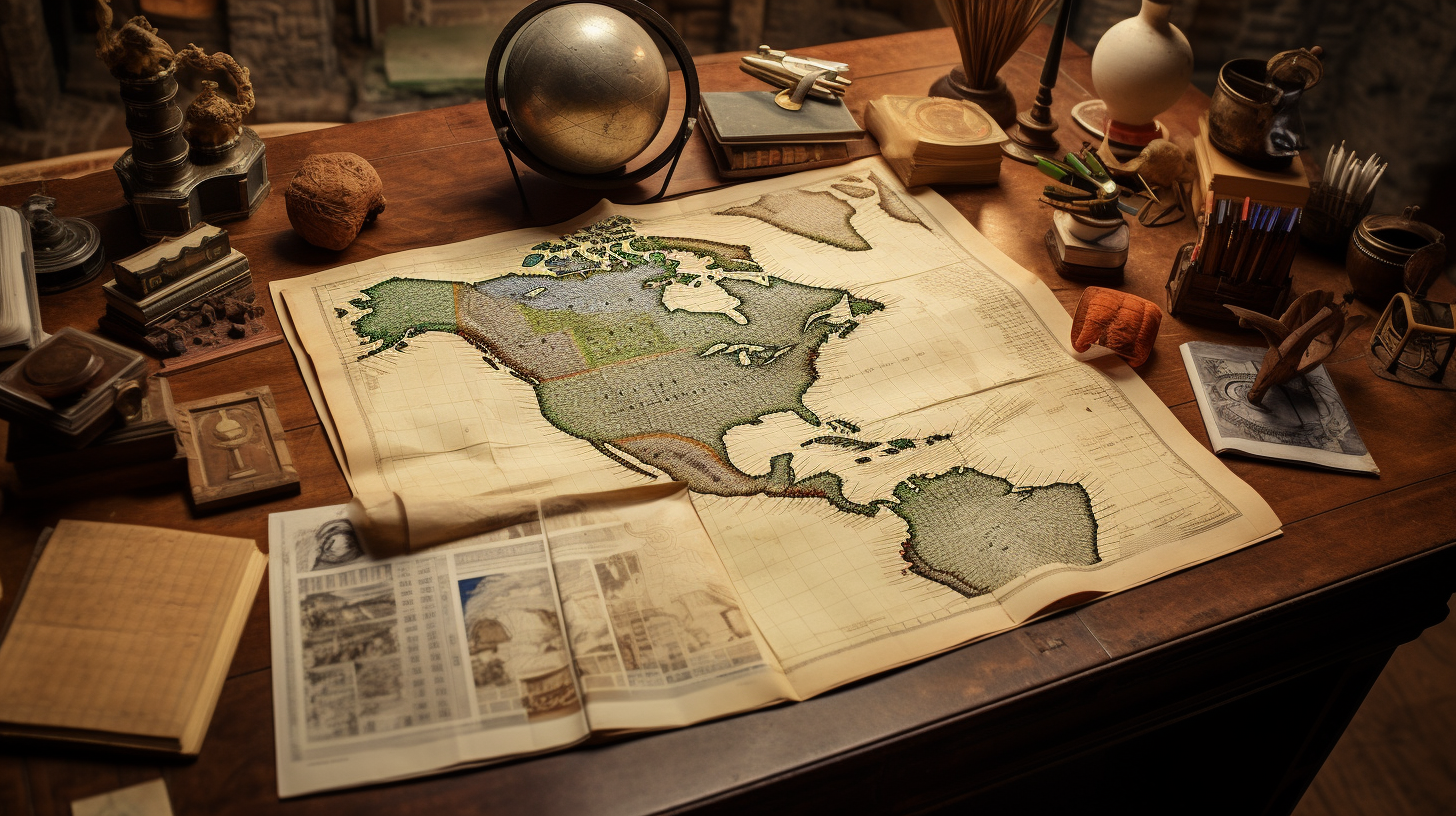
Articles
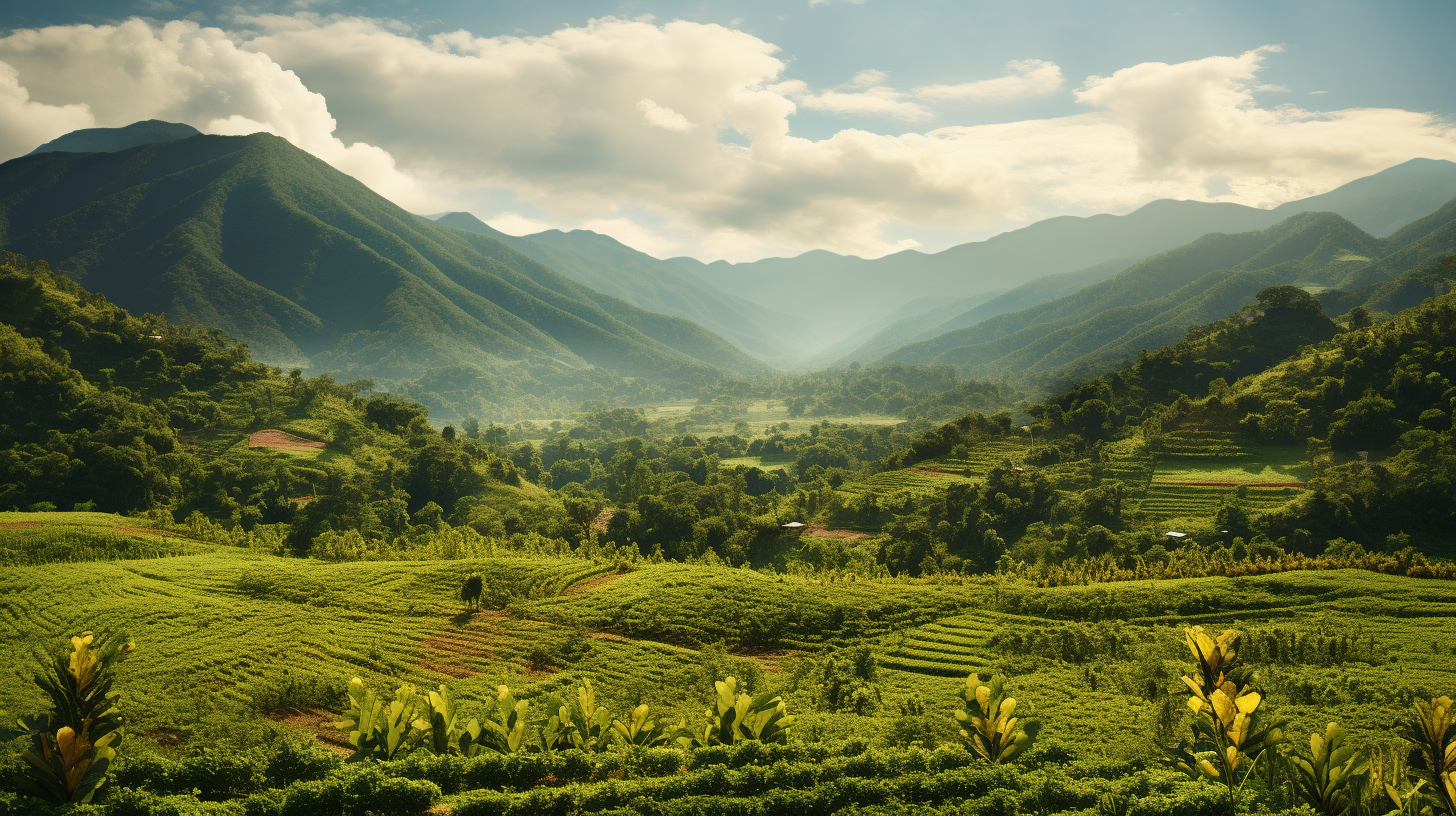
Mexican States
Southwest United States
Heritage and Governance
Navigating FamilySearch.org for Mexican Records
The most important FamilySearch.org link is the following one, which leads you to 66 Mexican collections, primarily Catholic Church records (going back, in some cases, to the 1500s and 1600s) and Civil Registry records (for municipio records).
Explorations in Mexican Genealogy
Each of us has two parents, four grandparents, eight great-grandparents and 16 great-great-grandparents. Fourteen generations ago – around 1540 – you had 16,384 12th great-grandparents. Within this generation you may have a wide range of ethnicities, including Spanish, French, Portuguese and Basques, as well as indigenous tribes from disparate parts of Mexico.
Indigenous Jalisco: From the Spanish Contact to 2010
The modern state of Jalisco consists of 78,597 square kilometers located in the west central portion of the Mexican Republic and taking up 4.0% of the national territory. As the seventh largest state in Mexico, Jalisco is politically divided into 124 municipios. With a 2010 population of about 7,844,830 inhabitants, Jalisco has the fourth largest population in Mexico with 6.6% of the national population.
Aguascalientes: Independence Sealed with a Kiss
The Mexican state of Aguascalientes (“Hot Waters”) is located in central Mexico. Surrounded by Zacatecas (on the north and west) and by Jalisco (on the south and east), Aguascalientes occupies 5,589 square kilometers, corresponding to only 0.3% of the Mexico’s surface area. Although it is one of the smallest Mexican states, Aguascalientes holds a position of great importance in the Mexican Republic, in large part because of its strategic location within the country. With its textile, electronics and auto parts industries, Aguascalientes represents an integral part of the Mexican economy.
Indigenous Aguascalientes: The Sixteenth Century Land of War
The State of Aguascalientes, located in central Mexico, is one of the smallest states in the Mexican Republic. Sharing its borders with Jalisco (on the south) and Zacatecas (on the north, west and east), Aguascalientes occupies a total of 5,616 square kilometers (2,168 square miles), which represents only 0.3% of Mexico’s national territory and is the twenty-eighth largest state in terms of area. Politically, Aguascalientes is divided into eleven municipios.
The Náhuatl Language of Mexico: From Aztlán to the Present Day
Across the 761,606 square miles (1,972,550 square kilometers) that comprise Mexico you can find a great variety of landscapes and climates. While mountains and plateaus cover more than two-thirds of her landmass, the rest of Mexico’s environment is made up of deserts, tropical forests, and fertile valleys. Mexico’s many mountain ranges tend to split the country into countless smaller valleys, each forming a world of its own. Over the last few thousand years, this has been a factor in the differentiation of a wide range of indigenous Mexican languages.
The Mexican Revolution and its aftermath 1910-1929
Porfirio Díaz (1830-1913) ̶a native of Oaxaca came to power in 1876 and essentially ruled the country until 1911. He was responsible for economic growth, industrialization and enhanced foreign investment, but had little regard for human rights. Diaz’s rule was both harsh and arbitrary. Much of Mexico’s economic system during his rule revolved around the hacienda system.
Who Were the Chichimecas?
If your ancestors are from Zacatecas, Guanajuato, Aguascalientes, Jalisco or San Luis Potosí, it is likely that you are descended from the indigenous peoples who inhabited these areas before the Spaniards arrived from the south. The historian Eric Van Young of the University of California at San Diego has called this area, the “the Center-West Region” of Mexico. This cultural region, according to Dr. Van Young, amounts to about one-tenth of Mexico’s present-day national territory.
The Indigenous History of Jalisco, Zacatecas, Guanajuato and Michoacán
Mexico’s Northern Mountainous Regions
The Sierra Madre Occidental Mountains run from Chihuahua into Durango, Zacatecas, Jalisco and farther south. The Sierra Madre Oriental Mountains run parallel to the Sierra Madre Occidental range on the eastern side of the country.
The Rubalcaba Surname in Aguascalientes
Origins in Santander
The surname Rubalcaba (also spelled Robalcava or Ruvalcaba) is known to have originated in the Mountains of Santander, with branches of the surname radiating from Medina de Cudeyo, Liérganes and Navajeda, three locations that are presently located in eastern Cantabria (northern Spain). Today, Cantabria is considered an autonomous area with Santander as its capital. It is bordered on the east by the Basque Autonomous Community, on the south by Castile and León (the provinces of León, Palencia and Burgos), on the west by Asturias and on the north by the Cantabrian Sea.
Cesar Chavez: Roots Deep in the Heart of Chihuahua
Cesar Chavez was an American hero, a person who was admired by both his supporters and his adversaries. In grammar school, many students learn about his advocacy and dedication to his causes, but few people know much about his roots. Nearly everyone knows that Cesar Estrada Chavez was born on March 31, 1927 near Yuma, Arizona. The Arizona State Board of Health Certificate of Birth Number 594 states that Cesario Chavez was the legitimate son of Librado Chavez (38 years old, a farmer born in Mexico) and Juana Estrada (35 years old, a housewife also born in Mexico). His birthplace was listed as “North Gila Valley” in Yuma County. A copy of that birth record has been reproduced below [Arizona Department of Health Services, “Arizona Genealogy Birth and Death Certificates: Index.” Online: http://genealogy.az.gov/].
Dual Identity: The Indigenous Peoples Who Occupy the U.S.-Mexico Borderlands
This presentation discusses the native groups that occupied the regions adjacent to and on both sides of the U.S.-Mexico border over the last three centuries. While some of these tribes are well-known to us today (i.e., the Yaquis, Tohono O'odham, Kumeyaay, Cocopah, etc.), tribal groups that have disappeared as distinguishable cultural entities (i.e., Carrizos, Mansos, Jocome, Coahuiltecans, etc.) will also be discussed. In addition to the history of those tribes, we will explore the current status of the tribal communities that still exist today.
Mexico: Confrontation Between Church and State
The Cristero Rebellion affected the lives of many Mexicans. Many Mexican-American families still talk of it today. This work discusses the ideologies of the two combatants: The Mexican Government and the Catholic Church. The battles are not discussed here, but the beginning and end of the conflict are discussed as viewed by the American press.
Indigenous Northeastern Mexico: The Ancestors of the Tejanos
Among all the indigenous people of Mexico, understanding the Indians of Northeastern Mexico is very challenging, as nearly all of these tribal groups have disappeared as “distinguishable cultural entities.” The largest ethnic group ̶ the Coahuiltecans ̶ ranged through much of the northeast, including parts of Coahuila, Nuevo León, Tamaulipas and southern Texas. Today they do not exist.
Los Fundadores: Finding Your Spanish Ancestors in México
The following presentation offers suggestions for tracing your Mexican ancestors back to Spain or Portugal. Although we offer research suggestions and show the reader resources to locate ancestors from the Iberian Peninsula, it is important to state the following:
Indigenous Puebla: Land of the Náhuatl Speakers
There is strong evidence that Puebla has been inhabited for a long time. In fact, the skull of the Texcal Man — which was found in a cave near Tehuacán in southeastern Puebla — has been dated at 7,480 years old. For the past millennium, several cultures — including the Olmec, Toltec, Náhuatl, Popoloca, Totonac, Mazatec and Otomí cultures — have thrived in the region that is now called Puebla. However, by the 15th Century, the Náhuatl-speakers of the Aztec Empire conquered nearly all of Puebla and ruled it until the coming of Hernán Cortés and the Spaniards. When the Spaniards destroyed the mighty Aztec Empire, the empire’s Puebla territories devolved into the hands of the Spanish Empire.
Indigenous San Luis Potosí: The Land of the Huastecos and Náhuatl
The land-locked state of San Luis Potosí (SLP) is located in center- north Mexico. With a surface area of 61,137 square kilometers (representing 3.1% of the total area of the Mexican Republic), San Luis Potosí touches nine other Mexican states.
The Surname Orozco: From Vizcaya to Aguascalientes
The surname Orozco (or Orosco) is a surname that has been prominent throughout both Spain and Mexico over the last few centuries. According to Richard D. Woods and Grace Alvarez-Altman, “Spanish Surnames in the Southwestern United States: A Dictionary,” two elements form this surname: “oros” which means holly tree and the suffix “-ko” which suggests place. Orozco therefore means place of the holly trees. Orozco is also believed to have been derived from the Latin word “orosius” – the son of bringer of wisdom.
Indigenous Nuevo León: A Region of Small, Mutually Antagonistic Tribes
Some historical sources have referred to four primary indigenous groups inhabiting Nuevo León at the Spanish contact in the late 1500s. They included the Alazapas in the north, the Guachichiles in the south, the Borrados in the east and Coahuiltecans in the west. In essence all of these groups had ties to either the Coahuiltecans or the Tamaulipec bands (who were, in essence, a sub- group of the Coahuiltecans). The Coahuiltecan tribes were made up of hundreds of small autonomous bands of hunter-gatherers who ranged over eastern Coahuila, northern Tamaulipas, most of Nuevo León and southern Texas.
The Indigenous People of Central Mexico: 1111 to 1521
Each part of the Mexican Republic has a unique and fascinating history, but a great deal attention has been given to the Indian groups that inhabited central México, in particular the present-day Distrito Federal (Federal District), known more commonly as Mexico City. Nearly 500 years ago, Hernán Cortés marched his small army of Spaniards and indigenous allies inland from Veracruz to confront the might of Emperor Moctezuma in Tenochtitlán. And, as a result, a patchwork of native kingdoms became the colonial fiefdom of a European monarch (the King of Spain).

Article Categories
- Aguascalientes 14
- Arizona 4
- Baja California 5
- Baja California Sur 3
- California 14
- Campeche 6
- Census 34
- Chiapas 4
- Chihuahua 14
- Coahuila 9
- Colima 1
- Conquistador Chronicles 2
- Durango 3
- Ethnic Identity 36
- Genealogy 32
- Guanajuato 9
- Guerrero 9
- Hidalgo 3
- Indigenous Insights 92
- Jalisco 25
- Mexico City 11
- Michoacan 7
- Morelos 5
- Nayarit 4
- New Mexico 3
- Nuevo Leon 8
- Oaxaca 6
- Politics 10
- Puebla 6
- Queretaro 2
- Quintana Roo 5
- San Luis Potosi 11
- Sinaloa 6
- Sonora 17
- Southwest US 23
- State of Mexico 6
- Tabasco 4
- Tamaulipas 12
- Texas 6
- Tlaxcala 7
- Veracruz 8
- Yucatan 6
- Zacatecas 13



